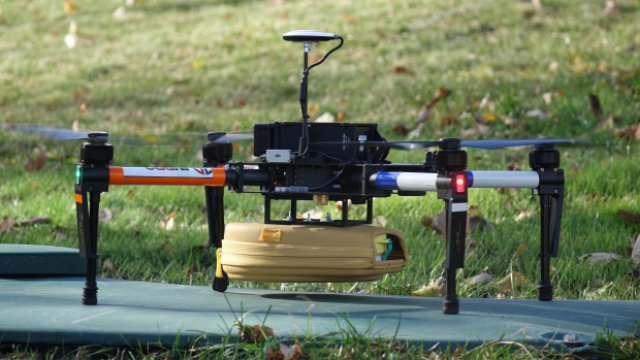In this prospective clinical trial carried out by the Department of Medicine, Centre for Resuscitation Science, Karolinska Institutet, Stockholm, Sweden, three AED-equipped drones were placed within controlled airspace in Sweden, covering approximately 80 000 inhabitants (125 km2).
Early defibrillation is critical for the chance of survival in out-of-hospital cardiac arrest (OHCA). Drones, used to deliver automated external defibrillators (AEDs), may shorten time to defibrillation, but this has never been evaluated in real-life emergencies. The aim of this study was to investigate the feasibility of AED delivery by drones in real-life cases of OHCA.
Drones were integrated in the emergency medical services for automated deployment in beyond-visual-line-of-sight flights: (i) test flights from 1 June to 30 September 2020 and (ii) consecutive real-life suspected OHCAs. Primary outcome was the proportion of successful AED deliveries when drones were dispatched in cases of suspected OHCA. Among secondary outcomes was the proportion of cases where AED drones arrived prior to ambulance and time benefit vs. ambulance.
Totally, 14 cases were eligible for dispatch during the study period in which AED drones took off in 12 alerts to suspected OHCA, with a median distance to location of 3.1 km [interquartile range (IQR) 2.8–3.4). AED delivery was feasible within 9 m (IQR 7.5–10.5) from the location and successful in 11 alerts (92%). AED drones arrived prior to ambulances in 64%, with a median time benefit of 01:52 min (IQR 01:35–04:54) when drone arrived first. In an additional 61 test flights, the AED delivery success rate was 90% (55/61).
In this pilot study, we have shown that AEDs can be carried by drones to real-life cases of OHCA with a successful AED delivery rate of 92%. There was a time benefit as compared to emergency medical services in cases where the drone arrived first. However, further improvements are needed to increase dispatch rate and time benefits.
The full study can be accessed here.
Source: European Heart Journal

